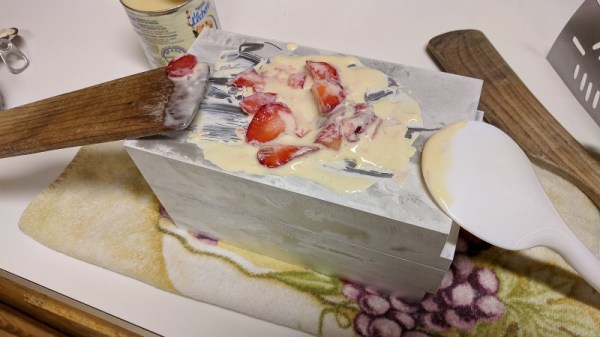After his last project left him with an eleven-pound block of aluminum, [Jason] got to thinking of what most of us would in that situation: fresh made ice cream. His mind was on the frozen concoctions of the aptly named Cold Stone Creamery, a mall food court staple where a chilled stone is used to turn fresh ingredients into made to order sundaes.
[Jason] did the math and found that an eleven-pound chunk of aluminum can absorb a little over 67,000 joules, which is over twice the energy required to freeze 100 g of water. In place of water he would be using cream, condensed milk, and strawberries, but believed there was a large enough safety factor to account for the differences between his ingredients and pure water.
His first attempt didn’t go exactly as planned, but with his Flir One he was able to back up his theoretical numbers with some real-world data. He found that he needed to start the aluminum block at a lower temperature before adding his ingredients, and through experimentation determined the block only had enough energy to freeze 30 g of liquid.
In the end [Jason] was satisfied with the frozen treat he managed to make from the leftovers of his radial mill project, but theorizes that an ever better solution would be to use a brine solution and drop the aluminum block all together.
Of course, if putting food on a slab of metal from your workshop doesn’t sound too appealing, you could always go the NASA route and freeze dry it. Either method will probably make less of a mess than trying to print objects with it.















